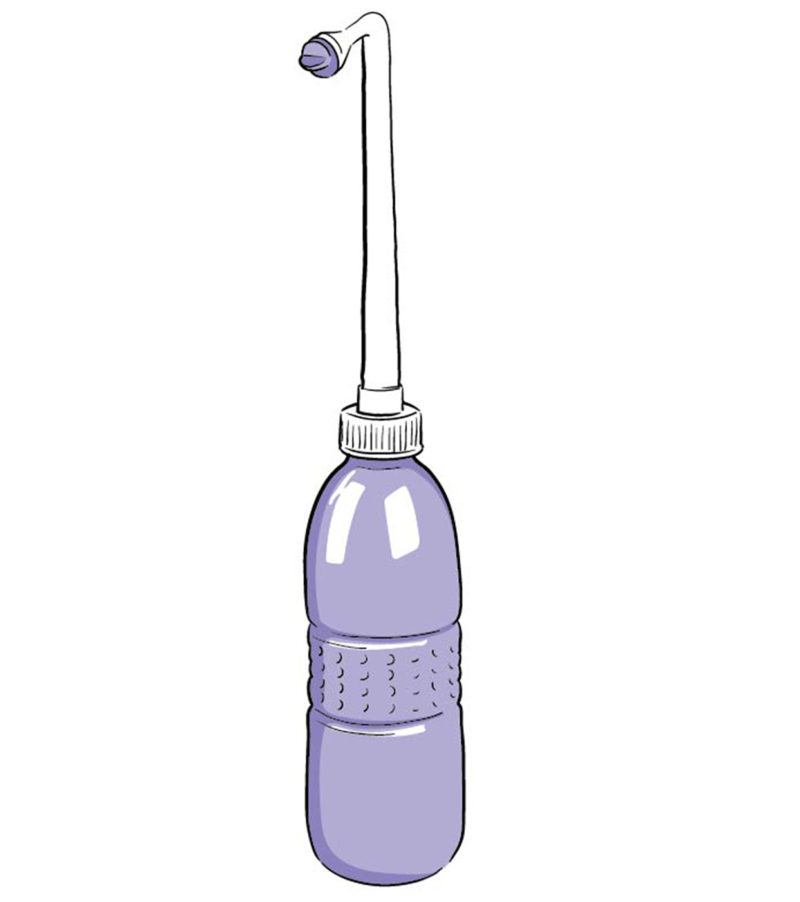FEATUREs:
- Ergonomic squeeze bottle
- Angled nozzle
- No batteries required
- Air-lock technology for stronger spray
My roommate burst out of the bathroom clutching a thin piece of metal several feet long in one hand and a pair of wire cutters in the other. “I managed to get the pipe out,” he said. “It drives me crazy when I’m trying to pee.”
I was twenty-one, and it was the first time I’d lived with a Western roommate. This was in Cairo, in a small apartment downtown. “But that’s the shattafa,” I objected, using the Arabic word. “How are we going to use the toilet now?”
It was there and then that I became aware of the most significant cultural difference between East and West: this metal pipe, the shattafa.
We went into the bathroom together, and I explained to him the process, step by step. In most Arab countries, and indeed many Eastern countries from Japan to India, a shattafa—or bidet shower—is an integral part of a toilet. The people of these parts of the world use water to wash after urinating or defecating, reserving toilet paper for drying afterward.
There are two kinds of shattafa. With the kind installed inside the toilet, when you turn the faucet on, water sluices out of the pipe to rinse your undercarriage. The wall-mounted variety is a bit more complicated. You grasp the showerhead and direct the nozzle; with your other hand, you turn on the faucet. Then you can dry off with toilet paper.
It wasn’t until 2008 that I traveled to a Western country—the United States. My digestion and bowel movements were out of whack for days, which was especially keenly felt sans shattafas. A friend advised me to keep a plastic water bottle next to the toilet, a temporary solution, but every time I returned to my hotel room, I’d find that the cleaner had taken the bottle away, thinking it was trash. In the end, I assimilated to Western civilization and learned to wipe my ass with paper alone.
Throughout history, people have utilized numerous cleaning tools—pebbles, corn leaves, newspapers, and telephone directories—in place of toilet paper as we know it today. Islam gives clear instructions for washing that include the use of water—a basic condition for the state of purity. In fact, Muslims have performed the washing ritual for over a thousand years, developing various plumbing fixtures for expelling and washing, culminating with the ceramic and wood toilets of the Ottoman period, which replaced the holes previously used for urination. A similar design began to appear in Italy and France. What is now known as the bidet—a freestanding apparatus—emerged in the seventeenth century. (Personally, I’ve...
You have reached your article limit
Sign up for a digital subscription and continue reading all new issues, plus our entire archives, for just $1.50/month.
Already a subscriber? Sign in






